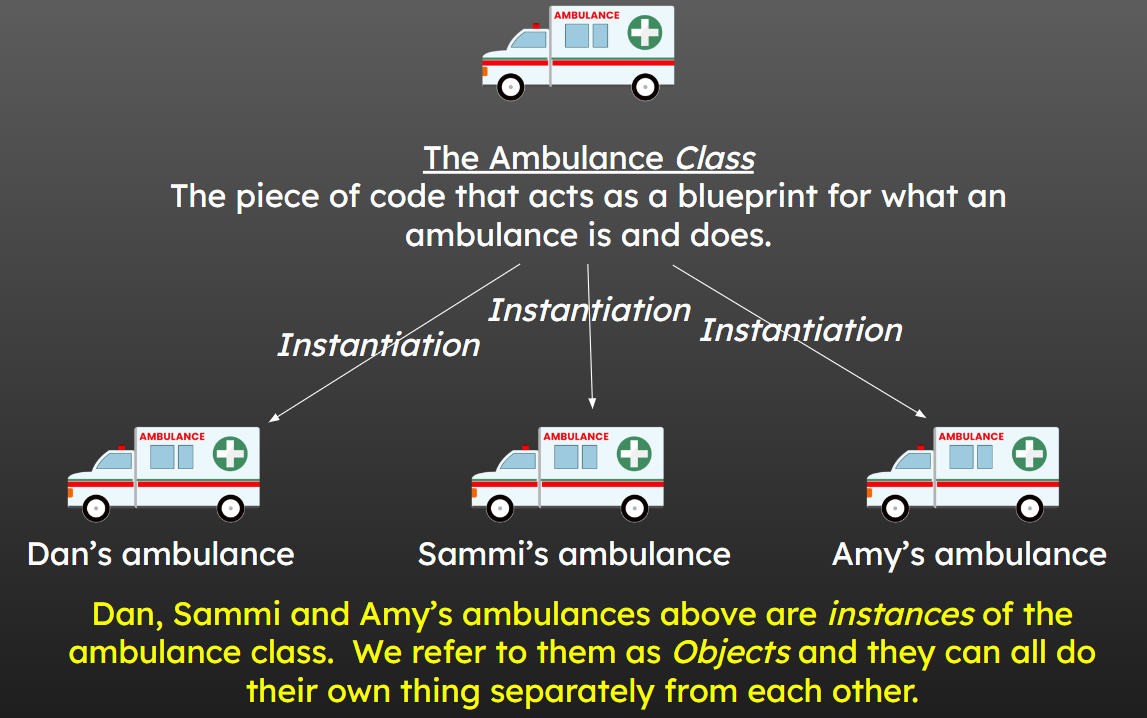47 A recap of object oriented programming
Let’s say we want to write code that defines how an ambulance works.
There will be properties the ambulance has. Things like :
- The trust it belongs to
- The registration number
- Whether a patient is currently on board
- Whether the siren is currently going off
There will also be things the ambulance does :
- Driving
- Parking
- Having patients loaded into it / out of it
- Switching the siren on and off
In Object Oriented Programming,
- the things it has are known as attributes
- the things it does are methods (which just means they are functions that belong to a class!)

47.1 An example
The pseudocode (i.e. this won’t run in python - but gives you an idea of the structure) shows how we would set up a class and what instances of that class might look like.
47.1.1 Class
CLASS : Ambulance
**Attributes**
name_of_trust : string
reg_number : string
patient_on_board : boolean
siren_on : boolean
**Methods**
drive (speed : float)
park (location : string)
load_patient (patient_name : string)
unload_patient (patient_name : string)
turn_on_siren ()
turn_off_siren ()
47.1.2 Instances
dans_ambulance
name_of_trust = “Chalk NHS Trust”
reg_number = CH41 LKS
patient_on_board = False
siren_on = Truesammis_ambulance
name_of_trust = “Rosser Healthcare”
reg_number = HS44 MAS
patient_on_board = True
siren_on = True47.2 Constructors
A constructor defines what happens when an object is instantiated from a class (ie created from a blueprint).
The constructor essentially “constructs” the object, specifies the initial values for the attributes, and may even run some methods to start things off.
The constructor is itself a method within the class.
In our example, the constructor might set up the name of the trust and registration number, and specify that the siren is off and there’s no patient loaded at the start.
